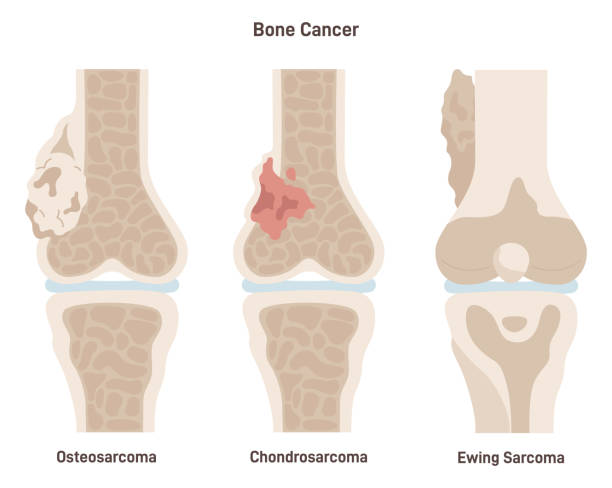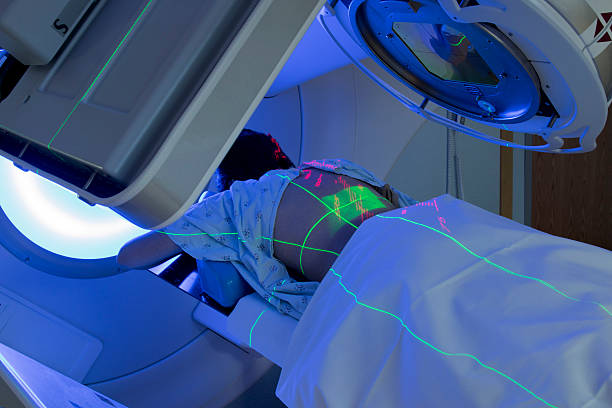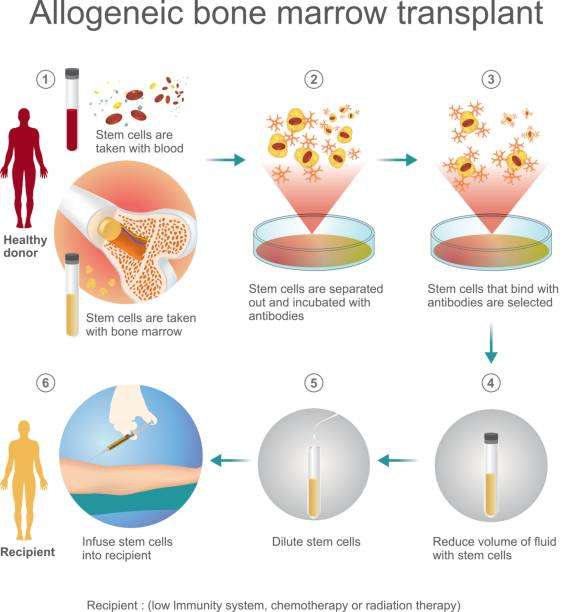Cancer of the skeletal system can be complicated. It generally affects parts like the bones, or the marrow within them. Although they sound alike, bone cancer and bone marrow cancer are separate conditions with different causes, signs, and remedies. Knowing the distinctions is important for early detection, correct diagnosis, and appropriate treatment planning.
What is Bone Cancer?
Bone cancer is a malignant growth that develops within the bone tissue. It is either primary, where it develops in the bones, or secondary, when cancer metastasizes from another area of the body into the bones. Although fairly uncommon, primary bone cancer is aggressive and usually needs multidisciplinary treatment.
Common Types of Bone Cancer
Several primary types of bone cancer exist and include:
Osteosarcoma – The most common one, usually occurring in children and young adults, affecting long bones.
Chondrosarcoma – Starts in the cartilage, commonly occurring in adults above 40.
Ewing Sarcoma – Impacts both the bone and soft tissues, predominantly in teenagers and young adults.
Every type differs in character, prognosis, and treatment response.
Symptoms of Bone Cancer
Symptoms may be subtle or mimic other bone disorders, such as:
Persistent bone pain, particularly at night
Swelling or a palpable lump
Don’t dismiss these signs—early assessment is important for early treatment.
What is Bone Marrow Cancer?
Bone marrow cancer from cancerous changes in the blood cells within the bone marrow. Unlike bone cancer, it does not start in the hard bone tissue but in the soft, spongy bone tissue that generates blood cells.
Types of Bone Marrow Cancer
Leukemia – Develops in white blood cells and generally affects the blood and bone marrow at the same time.
Multiple Myeloma – Plasma cell cancer that damages bones and weakens the immune system.
Lymphoma – Although more frequently associated with the lymphatic system, certain types begin in or involve the marrow.
Each type has a different impact on blood production and immunity.
Symptoms of Bone Marrow Cancer
Symptoms of bone marrow cancers are often subtle or systemic in their presentation. They include:
Frequent fevers or infections
Anemia and fatigue
Easy bleeding or bruising
Tiredness or pain
Bone pain, particularly in the ribs or back
Kidney dysfunction (most common in multiple myeloma)
Frequent fevers or infections
Not yet clear on the differences between the two conditions? Follow the table for easy understanding.
| Feature | Bone Cancer | Bone Marrow Cancer |
| Origin | Hard bone tissue | Blood-forming marrow inside bones |
| Common Types | Osteosarcoma, Ewing Sarcoma | Leukemia, Multiple Myeloma |
| Affected Age Group | Children and young adults | Older adults, varies with type |
| Primary Symptoms | Bone pain, swelling, fractures | Fatigue, infections, anemia |
| Bone Involvement | Direct tumor in bone | Secondary bone involvement via marrow |
| Imaging Used | X-rays, CT scans, MRI | Bone marrow biopsy, blood tests |
| Treatment Modalities | Surgery, chemotherapy, radiation | Chemotherapy, immunotherapy, targeted drugs |
Diagnosis of Bone Cancer and Bone Marrow Cancer
In case of bone cancer, the diagnostic can involve:
X-ray and MRI to visualize the tumor
CT or PET scan for staging
Biopsy to confirm malignancy and cancer type
For bone marrow cancer, the crucial diagnostics involve:
Complete blood count (CBC) to check cell levels
Bone marrow biopsy to detect the cancer cells
Flow cytometry and cytogenetics for subtype classification
“Precision in diagnosis has a major impact on treatment outcomes and enables us to personalize cancer treatment better.”
Treatment Options for Bone Cancer and Bone Marrow Cancer
For Bone Cancer:
Treatment is usually aggressive and can involve:
Surgical excision of the tumor (usually limb-sparing)
Chemotherapy, particularly for osteosarcoma and Ewing sarcoma
Radiation therapy in some situations
For Bone Marrow Cancer:
Treatment depends on the type:
Leukemia can include high-dose chemotherapy followed by stem cell or bone marrow transplant
Multiple Myeloma is treated with targeted therapy, immunomodulators, and supportive care
Lymphoma can be treated with chemotherapy and biological therapies
“Multidisciplinary care involving surgical, medical, and radiation oncology ensures comprehensive treatment, in most of the cases.”
Conclusion
Understanding the difference between bone cancer vs. bone marrow cancer is essential in recognizing symptoms early and seeking appropriate care. While both affect the skeletal system, their origins, symptoms, and treatment protocols differ significantly. Whether you or a family member is being diagnosed, being informed helps in making confident, timely decisions.
Frequently Asked Questions
Can bone marrow cancer spread to the bones?
Yes, especially in multiple myeloma, in which abnormal plasma cells can weaken bones, causing fractures and pain.
Are the treatments for bone cancer and bone marrow cancer the same?
No. Bone cancer usually needs surgery along with chemotherapy, whereas bone marrow cancer is treated mostly with systemic therapy such as chemotherapy and targeted therapy.
Is bone marrow cancer more common than bone cancer?
Indeed, bone marrow cancers such as leukemia and multiple myeloma are more common than primary bone cancers.
Can bone marrow cancer be cured?
Yes, in many cases, particularly through early diagnosis and intensive treatment, bone marrow cancers can go into remission or cure, particularly certain types of leukemia.
Is cancer in the bone marrow the same as bone cancer?
No, they are different. Bone cancer begins in the bone tissue, whereas bone marrow cancer begins in the blood-forming marrow within the bones.
Disclaimer: The information shared in this content is for educational purposes only and not for promotional use.








